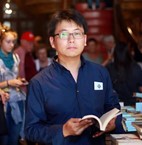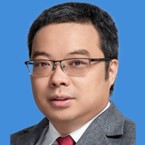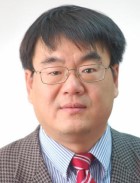Keynote Speakers
Prof. Fuyuan Gong
College of Civil Engineering and Architecture, Zhejiang University, ChinaSpeech Title: An Integrated Material-structural Approach for Multi-durability Impacts to Concrete Structures
Abstract: Concrete structures always suffer multi-durability impacts which can significantly reduce their service lives, such as fatigue loads, corrosion, alkali silica reaction (ASR), freeze-thaw cycles (FTC), condensed water and so on. In addition, those deteriorations are usually coupled simultaneously or sequentially in terms of physical, chemical and mechanical process, which cannot be predicted simply by the design formula. To capture those interactive effects, multi-scale modeling can be beneficial because the chemo-physical mechanisms can be modeled properly at the material level while the nonlinear mechanical performance can be simulated at structural level. This talk introduces such a numerical platform for the abovementioned deteriorations in consideration of the mutually interacting processes. The proposed model attempts to cover the most essential aspects, from thermo-chemo coupling at micro-scale to the poro-mechanical coupling at meso-scale, and finally leads to the coupled fracture of structural concrete at macro-scale. This multi-physical and multi-scale coupling model can provide a platform, on which the coupled complex damages to structural concrete are consistently dealt with for damage assessment of structural concrete.
Keywords: alkali-silica reaction; corrosion; frost damage; poro-mechanical coupling; reinforced concrete
Biography: Dr. Fuyuan Gong graduated from Tsinghua University (China) for his bachelor’s degree, and then got the master’s and Doctor's Degree from Hokkaido University (Japan). After that, Dr. Gong worked as a post-doctor researcher in The University of Tokyo and then moved to Yokohama National University as the Assistant Professor. Currently Dr. Gong is
working as the "ZJU 100 Talents" Professor in College of Civil Engineering and Architecture, Zhejiang University. His research interests includes concrete durability; thermodynamics, poromechanics and micromechanics for porous material; computational modeling; lifetime assessment, etc. In the last 5 years, Dr. Gong has published 26 journal papers which are indexed by SCI and has been selected as the JSPS (Japan Society for the Promotion of Science) Research Fellow (2014 - 2016), and visiting scholar in Princeton University (2012). He has also been awarded the Japan Concrete Institute (JCI) Award in 2014, and “Achievement Award for Young Engineers” by fib (The International Federation for Structural Concrete) in 2017. Currently, Dr. Gong serves as the Associate Editor of Journal of Advanced Concrete Technology (SCI) and International Journal of Structural Engineering (Scopus).
Prof. Guangming Chen
School of Civil Engineering and Transportation, South China University of Technology, Guangzhou, ChinaSpeech Title: Finite Element Analysis of Debonding Failures in FRP-Strengthened RC Structures
Abstract: Failure of reinforced concrete (RC) members (such as beams, slabs) strengthened with externally bonded fiber-reinforced polymer (FRP) is usually governed by the debonding between FRP and concrete, which is associated with the cracking behaviour of the strengthened RC members. In experimental studies, it is usually difficult to capture such debonding failure due to its brittle and quick nature. The finite element (FE) method is a useful tool for investigating the failure mechanisms and processes of such debonding failure. This lecture provides a review of existing FE studies on FRP-strengthened RC structures, including but not limited to the research work done by the authors’ research group in the past decade. Key issues in the FE analysis of the debonding failure are discussed, based on which, an advanced FE model capable of predicting the failure mode and failure process of FRP debonding is introduced. A dynamic approach developed by the authors’ research group to overcome the difficulties in achieving numerical convergence, which is usually associated with FRP debonding and concrete cracking, is also presented. The proposed FE modeling approach has been successfully used to accurately simulate the intermediate crack (IC) debonding failure of RC beams strengthened in flexure with FRP plates, failure of FRP-plated beams with end-anchorages, failure of RC beams shear-strengthened with FRP and debonding failure of FRP-concrete bonded joints. Some numerical results are presented as examples to substantiate the accuracy of the proposed approach.
Biography: Dr. Guang-Ming Chen is a Professor in School of Civil Engineering and Transportation, South China University of Technology (SCUT). He obtained his bachelor and master degrees both from Huazhong University of Science and Technology (HUST), and his PhD from Hong Kong Polytechnic University. Before taking the current role, he worked as a Professor in Guangdong University of Technology (GDUT). He also worked in University of California at Berkeley as a one-year visiting scholar during 2015-2016. Prof. Chen has been the PIs for four NSFC projects, including one young scholar project and three general projects. He was elected as “outstanding young teacher” of Guangdong Province in 2014. He is now a council member of the International Institute of FRP in Construction (IIFC) and an external reviewer of National Natural Science Foundation of China (NFSC). He is now the Associated Editor of international journal Advances in Structural Engineering and Guest Associate Editor of the international journal Frontier in Materials, and serves as reviewers of a number of reputable international journals such as Journal of Structural Engineering, ASCE, Journal of Composites for Construction, ASCE, Engineering Structures, Construction and Building Materials, Composite Structures etc. His main research areas focus on use of fiber reinforced polymer (FRP) in construction (structural strengthening and new structures) and use of recycled concrete aggregate concrete (RAC) in construction. He has published over 60 peer reviewed journal and conference papers (with an H-index of 20 in Google Scholar).
Prof. Weidong Zhu
Department of Mechanical Engineering, University of Maryland, USASpeech Title: Vibration and Stability of Distributed Structural Systems
Abstract: Some interesting results on the dynamics of continuous systems are reviewed. They involve: 1) vibration and stability of translating media with time-varying lengths and/or velocities; 2) nonlinear vibrations of systems with large degrees of freedom and general nonlinearities; 3) new spatial discretization and substructure methods for one- and two-dimensional continuous systems; and 4) new formulations of flexible multibody dynamics with application to elevator traveling cables. Two types of dynamic stability problems are addressed from the energy viewpoint in the first area: dynamic stability of translating media during extension and retraction, and parametric instabilities in continuous systems with periodically varying lengths and/or velocities. The incremental harmonic balance method is used and modified in the second area to handle periodic responses of high-dimensional models of nonlinear continuous systems and their stability and bifurcations, as well as quasi-periodic responses. The new spatial discretization and substructure methods in the third area ensure that all matching conditions of continuous systems are satisfied, and hence uniform convergence of solutions. New nonlinear models of slack cables with bending stiffness and arbitrarily moving ends are developed for moving elevator traveling cables in the fourth area. Some experimental results are presented to validate theoretical predictions.
Biography: Weidong Zhu is a Professor in the Department of Mechanical Engineering at the University of Maryland, Baltimore County, and the founder and director of its Dynamic Systems and Vibrations Laboratory and Laser Vibrometry Laboratory. He received his double major BS degree in Mechanical Engineering and Computational Science from Shanghai Jiao Tong University in 1986, and his MS and PhD degrees in Mechanical Engineering from Arizona State University and the University of California at Berkeley in 1988 and 1994, respectively. He is a recipient of the 2004 National Science Foundation CAREER Award. He has been an ASME Fellow since 2010, was an Associate Editor of the ASME Journal of Vibration and Acoustics from 2007‐2014, and is a Subject Editor of the Journal of Sound and Vibration. His research spans the fields of dynamics, vibration, control, applied mechanics, metamaterials, structural health monitoring, and wind energy, and involves analytical development, numerical simulation, experimental validation, and industrial application. He has published 180 SCI-indexed journal papers in these areas.


